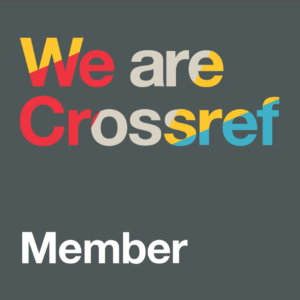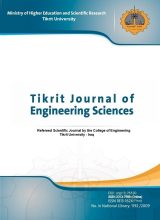The Tikrit Journal of Engineering Sciences (Tikrit j. eng. sci.) (TJES) is a peer-reviewed journal published by the College of Engineering, Tikrit University. The journal’s aims are to disseminate the latest development and achievements in scientific research to the world’s community. To ensure quality, the submission of manuscripts to TJES shall be subjected to double-blind peer review by an international board of distinguished reviewers. The journal published 4-issues/a year and in English to strengthen the international exchange of academic research. The journal provides a forum for high-quality research communications and addresses all aspects of experimental observations based on theory and applications. The journal welcomes contributions from all who wish to report on new developments and the latest findings in engineering.
In addition to the Engineering disciplines of Civil, Chemical, Electrical, Mechanical, Petroleum Engineering, and Environmental Engineering, TJES is interested in a theme issue on specific topics.
TJES was originally published in 1994 with one issue per year; it had basic requirements and sources. TJES issued two issues in 1999 and started 4-issues per year since 2004.
TJES invites research papers that encompass conceptual analysis, design implementation and performance evaluation. All papers, submitted for possible publication at TJES, are subject to a double-blind check, the peer review process, plagiarism, and similarity tests. Submissions are accepted only in the English language.

The primary goal of the new editors is to maintain a high quality of publications. There will be a commitment to expediting the time taken for the publication of the papers. To enhance the objectivity and fairness of the review process, the article authors’ names will be deleted.
Articles that are devoted to purely mathematical aspects without a discussion of the physical implications of the results or the consideration of specific examples are discouraged. Articles concerning material science should not be limited merely to a description and recording of observations but should contain a theoretical or quantitative discussion of the results.
TYPES OF MANUSCRIPTS
TJES publishes original research articles, review articles, and technical notes, that add significantly to the body of knowledge concerning science and engineering.
The Journal accepts 5 types of articles that are defined as follows:
1-Research Articles: A research article is a regular article that aims to present new findings. Manuscripts of Full-length Original Articles should include an abstract (Purpose, Methods, Results, and main Conclusion), Introduction, Experimental Methods, Results, Discussion, Acknowledgment, and References. Figures, and Tables. Graphics, images, and diagrams should be submitted in a high-quality original format.
2-Review Articles: A review article is an article that aims to present comprehensively already existing findings. Review articles are intended to provide an updated perspective on a certain subject that could be relevant to the readership of the journal. Review articles should include an abstract…….etc., and new findings.
3-Technical Notes: A note is an article (regular or short) that aims to present rather new findings. Technical notes do not exceed four printed pages (including figures and tables). They are the appropriate form for new findings, original preliminary results, comments on papers published in the journal, or important new records. A Technical Note should not include an abstract. Technical notes will be reviewed as normal papers.
4-Selected Conference articles: Upon an agreement with the conference committee, selected papers may be published by the Journal in a special or regular issue. In this case, the editor will appoint in collaboration with the conference committee guest editors.
5-Erratum: a correction of a published text. As a general rule, publishers issue an erratum for a production error (i.e., an error introduced during the publishing process) and a corrigendum for an author’s error. It is usually bound into the back of a book, but for a single error, a slip of paper detailing a corrigendum may be bound in before or after the page on which the error appears. An erratum may also be issued shortly after its original text is published.
Categories
-Electrical and Electronic Engineering
-Mechanical Engineering
-Environmental Engineering
-Chemical Engineering
-Civil and Structural Engineering
The Editors reserve the right to reject papers without sending them out for review.
Editor Prof. Dr. Aziz Ibrahim Abdulla, Civil Engineering, Tikrit University, Iraq E-mail: [email protected]; [email protected] Phone: 009647708450730

